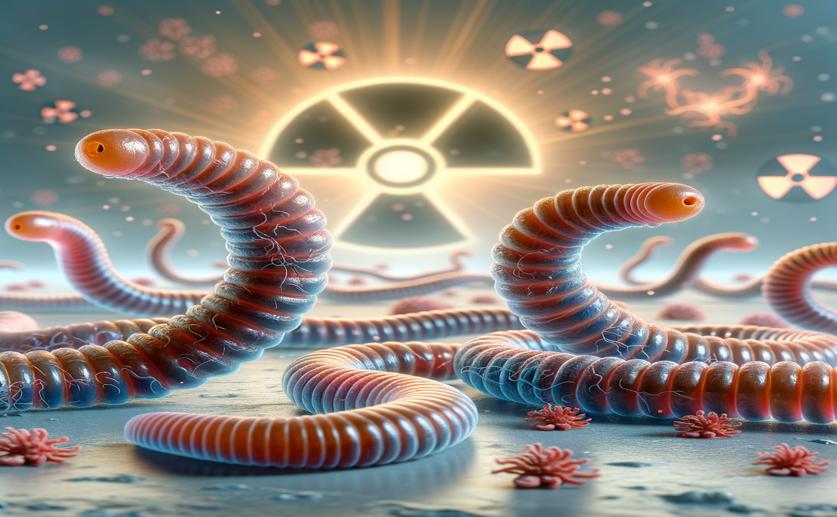
Immune System Changes in Roundworms After Exposure to Radiation
Jenn Hoskins
12th July, 2024

Image Source: Natural Science News, 2024
Key Findings
- The study, conducted by IRSN, examined the effects of gamma radiation on the fitness and host defense of Caenorhabditis elegans over 20 generations
- Populations exposed to higher levels of radiation showed reduced fitness compared to control populations, but their fitness improved over time
- When exposed to a bacterial parasite, irradiated populations had lower survival rates, indicating a trade-off between radiation adaptation and host defense capabilities
GeneticsAnimal ScienceEvolution
References
Main Study
1) Host defense alteration in Caenorhabditis elegans after evolution under ionizing radiation
Published 9th July, 2024
https://doi.org/10.1186/s12862-024-02282-7
Related Studies
2) An experimental test of evolutionary trade-offs during temperature adaptation.
Journal: Proceedings of the National Academy of Sciences of the United States of America, Issue: Vol 104 Suppl 1, Issue Suppl 1, May 2007
3) Adaptation costs to constant and alternating polluted environments.
4) Collateral damage: rapid exposure-induced evolution of pesticide resistance leads to increased susceptibility to parasites.
5) Adaptive responses and latent costs of multigeneration cadmium exposure in parasite resistant and susceptible strains of a freshwater snail.



 15th June, 2024 | Greg Howard
15th June, 2024 | Greg Howard